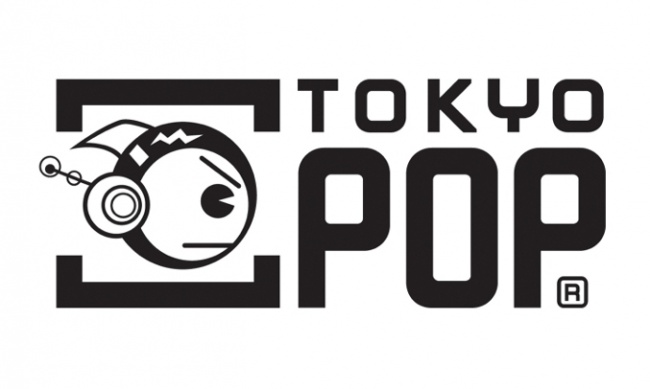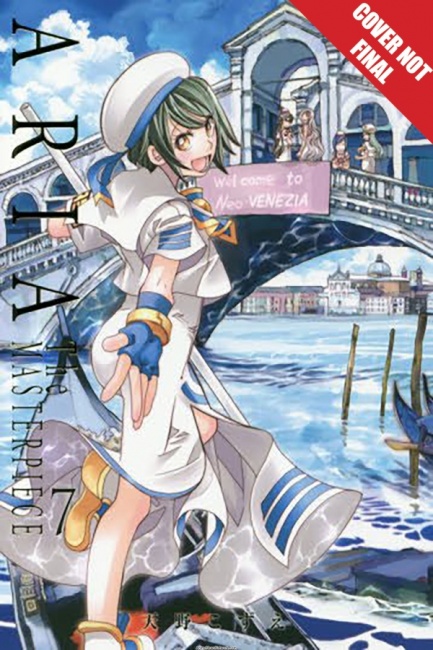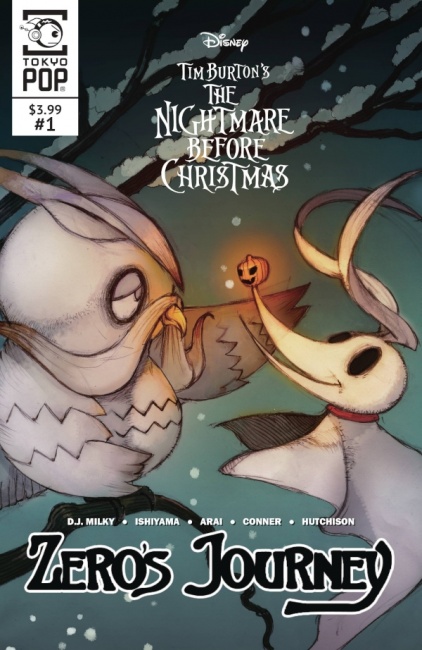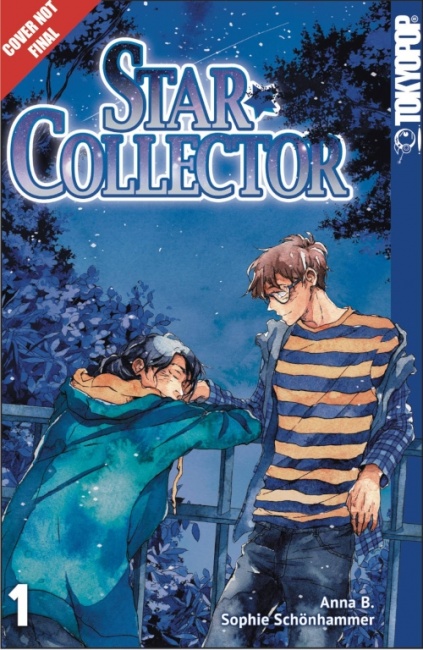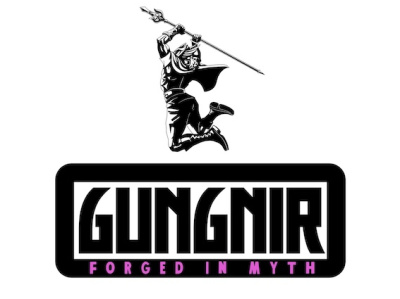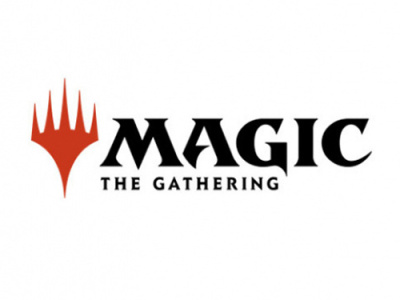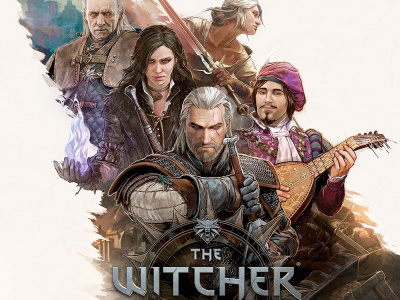As part of ICv2’s Manga Week, we talked to Tokyopop CEO Stu Levy about his acquisition and marketing strategy, the decision to break up some titles into single-issue comics, and selling Disney manga in the direct market.
Stu Levy: We certainly were looking at expanding, but carefully. In fact, we were considering expanding up to four or five releases per month but settled in around three per month on average, including our single-issue releases of Nightmare Before Christmas: Zero’s Journey. While we love the opportunity to bring great manga, both one-offs and series, to readers and the market overall, we are aware that it’s a highly competitive market and not every book will find a strong readership. So, we try to pick and choose titles we believe are worth publishing and not slip into a mentality of "churn it out," which frankly we’ve struggled with in the past when we were growing rapidly as a company. I would consider our current philosophy to be more of a "slow growth" approach, supporting creators and titles we feel deserve attention in our market – perhaps a bit like a slow food approach to publishing. For 2019 we will most likely end up with a similar output to 2018, both across print and digital.
What sort of opportunities do you see in the manga market right now? How do you see Tokyopop fitting in to the market as a whole?
In my view the licensed manga market is quite mature. I believe with the existing group of English-language publishers it’s well-served. At Tokyopop, we debate a lot within our team about which titles we should publish, but at the end of the day it’s most important that our team is passionate about a title or we shouldn't publish it. For us, that means especially supporting family-friendly titles through our Disney Manga line and other titles we find, our International Women of Manga line which introduces and supports female manga creators from different parts of the world, and currently a few Japanese licenses we think deserve a chance in the English market, especially Boys and Girls Love, and special collector’s editions of some titles we released in the past that we have the ability to release again. In the future, I think you’ll see us experiment with some other types of titles, but the goal is to have an impact on our society in some way – where we can feel publishing the book makes a difference and has an impact.
In terms of content, which series are doing best for you? And which types of stories in general—the Disney manga, other licensed manga, or the non-Japanese titles?
It’s still a bit early since we restarted publishing in mid-2016 to notice a pattern of some sort. Of course, some titles do better than others, and we do our best to learn from that, but sometimes it’s just impossible to predict. With Disney Manga, the next phase will really focus on brands for which we think we can create great books that fans will enjoy, ideally fans of all ages.
Are you reconfiguring in response to that—dropping one thing or increasing another?
We do have commitments to complete series, which is one key reason we think carefully when we pick up a series where we don’t have control over the number of volumes. For instance, the Aria collectors’ edition is just launching now, and it’s a 7-volume series, a beautiful edition of 2-in-1’s which covers all 14 volumes of the Aqua and Aria series we had partially published back in the day (see "SDCC Manga Round-Up: It’s Old But It’s Good"). This is a serious commitment and hopefully fans support it, but we’re committed to publishing the entire series no matter what happens. Obviously, that type of commitment is not easy, so we need to really select which titles we are able to get behind in this way. Nightmare Before Christmas: Zero’s Journey is another example – we’re publishing 20 single issues, collected into 4 graphic novels and eventually a massive manga collectible (see "Tokyopop Reveals Plans for NBX, Mulan, and Two New Boys Love Titles"). That’s a real commitment – so we can’t do that with too many series. Again, we have to select carefully.
You did something really unusual by releasing Nightmare After Christmas: Zero’s Journey as a monthly comic before collecting it into graphic novels. Why did you go that route, and what did you gain (or lose) from it? Are you planning to do more comics in that format?
We wanted to find a way to support the direct market since manga is traditionally a bookstore category. Of course, comic shops have sold a great number of manga over the years, but we thought it would be interesting to do a single-issue series available via the direct market so that fans and collectors who prefer that format could get behind the series. We participated in Free Comic Book Day by launching the series with issue #0 and that was a big success, with over 100,000 copies distributed. So far the issues have held strong, even though we frankly struggle with the monthly schedule (we’re pretty much late on every issue unfortunately). It has been a great experience – and we plan to do something similar for our Kilala Princess sequel, beginning with four issues of Mulan. We’re not sure how that will do in the comic shops but we think a popular Disney brand loved by fans of all ages is a good way to go.
I’ve seen you at a number of conventions in the past few years. How does that help promote the Tokyopop line, and what kind of feedback are you getting?
It’s great for us and the fans – a wonderful way to connect, even though it means quite exhausting work days for the team. It’s invigorating to have fans squeal with excitement when they see characters they love, and a lot of our books are not yet available widely so it’s also nice exposure to our offerings. We wish we could do more but they’re not cheap. Geographically we tend to stick near our office (West Coast), but we try to travel when we can.
What other means are you using to reach out to fans?
Mainly the typical means – social media, email lists, website, blogs and of course working with stores closely. In a way, things have evolved in how to reach people but actually not as much as one would think.
What are your most important sales channels?
It’s a pretty typical combination of bookstores (both chains and independents), comic shops, online (especially Amazon of course), wholesalers, and libraries. Every now and then we have a book that goes into mass, but it’s certainly not our specialty. In particular, libraries have been very interested in our Disney Manga and International Women of Manga lines and it’s great to see that for both schools and communities, librarians support reading through graphic novels and manga. We honestly could not survive without the combination of these channels – bookstores are mission critical, online is obviously huge, and the direct market is a life-saver. I cannot thank all of them enough for continuing to support manga and graphic novels.
What has the reception been for your Disney titles in the direct market? What have you done to promote them in that area in particular?
We’ve been very pleased with the direct market’s interest in Disney Manga titles, especially our color series like Nightmare Before Christmas: Zero’s Journey and Disney Descendants. Our upcoming Kilala Princess: Mulan book will also be in color and single issues bound into a graphic novel. All of these titles are standard comic book size, which is perfect for comic shop shelving. We think it’s a nice way to reach families and collectors who may not be manga fans but are into Disney. We support these titles with Free Comic Book Day (Nightmare Before Christmas: Zero’s Journey in 2018 and Disney Descendants coming up in 2019), various giveaways, special programs, and outreach.
How does digital fit into the picture?
Most of our titles are available across digital formats, including of course Kindle, iBooks, comiXology, Overdrive, Comics Plus, and soon a few other platforms including of course our own POP Comics. While the sales are still quite limited, we are bullish about where this market is headed as apps become more engaging and convenient. We’re also involved in a successful digital platform venture, including our own platform POP Comics and an existing platform that is doing very well. In 2019 we’ll experiment with a few "digital first" and "digital exclusive" projects, leading up to 2020. Our goal is to handle discovery and promotion through digital, and focus print on the titles that digital has allowed to build a fan base. This means for fans, retailers, creators, and us as a publisher, we can provide a line of books that has a pre-existing demand and the ecosystem knows people want to buy.
I notice that most of your Disney manga are priced at $10.99, and your adult manga at $12.99, but some are higher. What is your philosophy about pricing?
We are mainly following the lead of other publishers here. It seems manga is generally around $13, sometimes higher, but we try to be a bit lower for all-ages titles and International Women of Manga titles so that customers can save a bit of money on those books. It’s not easy to make money in publishing nowadays (in fact, very difficult), so we can’t price too low, but we try our best.
Given the increase in popularity of light novels in recent years, do you have any plans to go back to publishing those?
Currently we don’t, mainly because we don’t think we have the bandwidth. But if the opportunity arises and it make sense, we’d certainly consider it.
What new initiatives or series do you have planned for 2019 and beyond?
In 2019, we’re very excited about our new International Women of Manga creators and their projects. We’re currently releasing two Boys Love stories, Star Collector by Sophie Schönhammer and Anna Backhausen, and Servant & Lord by Lo and Lorinell Yu. We’re excited to have a diverse selection of not only creators but genres as well, and fan reaction so far has been fabulous. We also have the final volume of a number of our other International Women of Manga series, and a few brand new creators and titles that we’ll be announcing shortly. We’ve been thrilled by the support this line has received from fandom and retailers, as well as the media. It’s important that creators have the chance to express themselves in whatever aesthetic or medium they enjoy the most – and manga has truly become a global medium. Luckily, there are fewer "purists" that feel manga must be Japanese and a lot more open-minded fans who support and encourage talented creators, whatever gender, ethnicity or nationality.
On the license side, we’re very excited to launch the ARIA collectors’ manga, Aria the Masterpiece, a gorgeous seven volume series that collects all 12 volumes of Aria and the 2 volumes of Aqua, its prequel. It’s a beautiful, fantastical and somewhat sentimental world with touching moments and engaging characters – and now we can finally offer the completion of the series for both legacy and new fans.
Of course, we’re continuing our current licenses Hanger, Futaribeya, Konohana Kitan, and Yuri Bear Storm. And there will be a few announcements coming soon.
Finally, on the Disney side, besides Book 2 and 3, and the related single issues, of Nightmare Before Christmas: Zero’s Journey, we’re very bullish about the Kilala Princess sequel, starting with Mulan. With the updated cross-over format, adorable artwork, and one of Disney’s strongest and beloved princesses, we think Mulan will do very well. And for Disney Descendants, we have brand new stories we’ve created: Evie’s Wicked Runway and Dizzy’s New Fortune, both full-color graphic novels with manga art, by the same talented team as Rotten-to-the-Core. Doing new Descendants, Nightmare Before Christmas, and Kilala Princess / Disney Princess stories for Disney is an honor, and we love the enthusiasm we receive from not only Disney fans but fans of these specific brands.
There are also some other initiatives for later in the year that we’re not quite ready to discuss or announce, but of course you’ll be the first to know!



